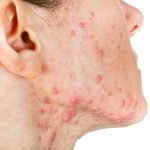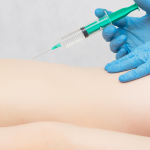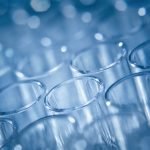Nicole Egenberger, ND
Autoimmune disease is the clinical manifestation of a dysregulation of the immune system, leading to a loss of tolerance for self. There is general agreement that a degree of natural or benign autoimmunity is needed for the development of effective immune responses against infectious agents or cancer cells. However, given a susceptible genetic background or exposure to certain environmental triggers, natural autoimmunity may develop into an exaggerated immune response against self, leading to the development of autoimmune diseases.
Put another way, most autoimmune conditions appear to be distortions of what are generally considered to be common physiologic processes. These distorted autoimmune responses are on the rise as a class of disease, and bring with them alarming morbidity and mortality rates.
Several systems of checks and balances prevent autoimmune disease from developing:
- Central tolerance in the thymus is one of the most critical. In the thymus, auto (or “self”) antigens are expressed as a test for T cells. If T cells have receptors that bind to these antigens, they are deleted, preventing an autoimmune response.
- Peripheral tolerance. If a T cell escapes the thymus and does recognize a self-antigen, in the absence of “danger” signals from the innate immune system, the T cell will be deleted.
- Peripheral ignorance. A T cell specific to a host antigen may also fail to meet its antigen while circulating outside the thymus and will not be activated.
Given these checks and balances, why do certain people develop a pathological immune response to self? There are many theories and, as with many diseases, there may be many precipitating and exacerbating factors. In general, however, there is agreement that a series of mis-steps in both the innate and adaptive immune systems must occur to trigger a full-blown autoimmune condition.
Innate Immunity and Inflammation
Peripheral tolerance and ignorance of autoreactive T cells depends on an appropriate interaction of innate immune responses with the adaptive immune system. If these protective mechanisms are overcome, autoimmune disease can ensue:
- Overcoming peripheral tolerance in T cells requires active prolonged stimulation by the innate immune response, which can in turn be stimulated by chronic inflammation.
- Peripheral ignorance is overcome when the innate immune system draws peripherally ignorant T cells to the tissue site that carries its antigen, thereby leading to T cell activation.
- Tissue damage triggered by chronic inflammation can lead to regular spillage of cellular antigens, allowing for the formation of autoantibodies.
So what are the triggers of inflammation and innate immune response that initiate and lead to the development and persistence of autoimmune disease?
Genetics
Certain single nucleotide polymorphisms (SNPs) of immunoregulatory genes have been identified as weakly influencing a predisposition to many autoimmune disorders. They code for a broad spectrum of functions, including interleukin receptors, molecules involved in innate inflammation and B cell activators.
It is also believed that genetic abnormalities may result in defects in the central tolerance mechanism of the thymus, leading to less efficient screening and deletion of autoreactive T cells. Subsequent activation of these T cells through the innate immune system’s response to a viral infection could trigger development of full-blown autoimmune disease. One such abnormality is autoimmune regulator (AIRE) transcription factor deficiency, which results in the inability of thymic epithelial cells to express peripheral antigens.
There seems to be overall agreement that autoimmune diseases are not caused by genetics alone and are more likely the result of multiple interactions between genes and environmental factors.
Infection
There are two mechanisms through which infectious agents may lead to autoimmune disease. Agents can be a precipitating trigger, with infection either going unnoticed or preceding the development of autoimmune disease. Alternatively (or additionally), they may create the environment in which tissues are more susceptible to autoimmune attack.
As a precipitating factor, an infectious agent may 1) mimic an autoantigen (molecular mimicry or crossreactivity); 2) create immortal B and T cells (through loss of apoptotic function); or 3) cause tissue damage, allowing for spillage of intracellular antigens and thereby allowing auto-antigen formation.
Again, the question arises as to whether an infectious agent is sufficient to produce autoimmune disease, as it is not the case that everyone infected by these agents develops autoimmune disease. It seems more likely that an infectious agent is a necessary but not sufficient cause of autoimmune disease and that a failure of the immune system to regulate its response to the infection may be the underlying cause. This mechanism seems parallel to a naturopathic understanding of the health of terrain, determining a host’s response to infection, andmay also point to the interaction of genetics and environment.
The following is a list of infections shown to be causally related to or have a strong but as yet undefined relationship to autoimmune diseases.
- Group A strep (GAS): rheumatic fever
- Borrelia burgdorferi: possibly Lyme disease in its late phase
- Epstein Barr virus and parvovirus B-19: systemic lupus erythematosus (SLE)
- Malaria: associated with the production of antinuclear antibodies (ANA)
- pylori: may be associated with autoimmune gastritis
- HIV: psoriatic arthritis and Reiter’s syndrome; Sjögren’s syndrome and HIV-related vasculitis
- Hepatitis C: Sjögren’s syndrome, autoimmune thyroiditis and hepatitis, membranoproliferative glomerulonephritis.
Interestingly, there are two documented cases of SLE patients with long-term, severe disease whose clinical signs and symptoms normalized after infections with multiple pathogens, and continue to be symptom-free and have normal bloodwork three and five years later. Recent research also indicates that parasite-derived molecules are capable of modulating the host immune response. It seems that parasites can modulate both innate and adaptive immunity to benefit themselves but that we, in turn, benefit. Zaccone’s paper offers the hypothesis that the decrease in parasitic infections may, at least in part, account for the rise in autoimmune disease.
Apoptosis
Apoptosis is required for self-tolerance and the normal decrease of elevated lymphocytes at the resolution of immune responses. Disordered apoptosis or dysregulation of the subsequent cleanup of apoptotic cells has been linked to an increased susceptibility to developing autoimmune disease.
Infection, inflammation or environmental exposures can lead to an increase in apoptotic cells, which places an increased burden on the innate immune response. If the body is unable to cope with this increased burden, the apoptic cells may linger, triggering the production of autoimmune antigens. As discussed, a prolonged innate immune response may also trigger autoimmune disease.
Environmental Exposure
Interest in environmental triggers for autoimmune disease increased after a scleroderma-like illness was triggered in Spain and the USA due to contaminants in rapeseed oil (Spain) and in L-tryptophan (USA). Occupational exposure to cristalline silica has been demonstrated to be a strong risk factor for developing autoimmune disease, specifically SLE. Hair dye has been associated with a slight increase in risk of developing SLE and this risk increased the longer the period of time over which hair dyes were used. There is mixed evidence that cigarette smoking is correlated with an increase in onset or progression of RA and SLE. It has been hypothesized that differences in the use of pesticides and additives in the making of cigarettes may account for the conflicting results, which, for our purposes, still points to environmental toxins as contributing to the development of AD.
There are several proposed mechanisms through which xenobiotic exposure can result in autoimmune disease. These include 1) self-antigens being chemically altered through exposure to xenobiotics, and 2) xenobiotics (specifically in food and cosmetics) acting as strong molecular mimics that activate T cells. It has also been hypothesized that chemicals causing deficient methylation of DNA may lead to the development of autoimmunity.
Drugs and Vaccinations
Some autoimmune diseases can be drug induced and there is evidence that the following list of medications may be involved.
- Vaccination against hepatitis B has been observed to predate the diagnosis of SLE in some cases.
- Patients receiving procainamide often develop autoantibodies that can persist after discontinuation of the drug
- There are increasing numbers of case reports of drug induced SLE following TNF inhibitors and interferon therapy.
- Insulin therapy has been correlated with development of RA.
Decreased Immunity
Interestingly, defects in adaptive immunity have been associated with the development of autoimmune disease. One hypothesis offered as an explanation is that, in an infection innate immunity is the first responder, releasing cytokines that damage both pathogen and tissue. Innate immunity also recruits the adaptive system, which launches a specific attack and generally resolves the infection quickly. If the adaptive system is unable to respond, the pathogen remains, leading to a persistent innate immune response. This in turn leads to increased priming of T cells that may overcome peripheral tolerance and ignorance, leading to the development of autoimmunity.
Stress and Cortisol and the HPA Axis
Evidence suggests that hypo-functioning of the hypothalamus-pituitary-adrenal (HPA) axis is associated with rheumatic disease, and stress is recognized as an important risk factor in the pathogenesis of autoimmune rheumatic diseases. Some retrospective studies have shown that a high percentage of patients reported extraordinary emotional stress before autoimmune disease onset, and cortisol rhythm appears to be altered in rheumatoid arthritis (RA). Two studies examining HPA axis function in Sjögren’s syndrome patients demonstrated significantly lowered ACTH and plasma cortisol response to a corticotropin-releasing hormone (CRH) stimulation compared to normal controls. Another study, however, found that women with Sjögren’s syndrome have intact cortisol synthesis but decreased serum concentrations of DHEA and an increased cortisol-DHEA ratio compared with controls.
As we know, the HPA axis, sympathetic nervous system and immune system are intimately related, and interactions between immune and nervous systems play a critical role in determining susceptibility/resistance to inflammatory disease. Cytokine activation of the HPA axis and the resultant glucocorticoid-induced suppression of immune and inflammatory responses represent a critical pathway through which peripheral inflammation is modulated by the nervous system. Interruption of this communication is associated with exacerbation of inflammatory and autoimmune disease.
Sex Hormones
Estrogens have been shown to enhance adaptive immunity and may be responsible, at least in part, for the increased frequency of autoimmune disease in women, whereas androgens and progesterone are natural immune suppressors. It is hypothesized that cytokine production leads to increased activity of aromatase activity which, in turn, leads to increased availability of pro-inflammatory estrogens in synovial fluid of both men and women with RA. Altered serum hydroxylated estrogens have also been found in the serum of SLE patients. It is hypothesized that locally increased estrogens may activate cell proliferation including macrophages and fibroblasts.
Adding further evidence to this hypothesis, observational studies have demonstrated a strong association was noted between the use of HRT and the onset of SLE.
Food Allergies and Atopy
A Finnish study demonstrated that infantile atopy increases a predisposition to developing autoimmune disorders – 9% incidence vs. 1% in controls. Interestingly, and perhaps not surprisingly, subjects with infantile dermatitis also reported significantly more recurrent GI pains and milk-induced gastrointestinal symptoms than controls. Another retrospective study revealed that 37% of patients with autoimmune disease had one or more clinical manifestations of allergy (urticaria, rhinitis, pharyngitis, conjunctivitis, asthma, eczema and allergy to foods, drugs and insect stings). History of allergic symptoms has also been associated with increased prevalence of RA, and the frequency of urticaria, pharyngitis, conjunctivitis and food allergies are statistically increased in SLE.
As NDs, we commonly consider food allergies as a source of inflammation. Many patients have observed a correlation between severity of RA symptoms and their food intake, and several studies have attempted to explain this observation. One study found that in RA patients, intestinal IgM, IgA and IgG to caseine, gliadin, ovalbumin, cod and pork were all elevated compared to controls. This study hypothesized that in RA patients there may be an adverse additive effect of multiple hypersensitivity reactions to food and that the immune complexes that mediated these reactions may promote autoimmune reactions in joints. In another study, elimination and reintroduction of allergenic foods among patients who responded positively to skin-prick tests for those foods resulted in increased stiffness, pain, global assessment of disease activity, serum amyloid A protein, ESR and C-reactive protein.
Mast cells have also been implicated in autoimmune disease. Although generally thought of as a player in innate immunity, mast cells can be activated by the adaptive immune system through the binding of IgG and IgE. The extent of lesions in autoimmune disease can be correlated with the degree to which mast cells are activated. In this way, food allergies may stimulate mast cells, promoting tissue damage in autoimmune disease.
Vitamin D
Patients with multiple sclerosis, RA and SLE have been shown to have deficient 25-OH vitamin D levels. In SLE, disease severity correlates with lower vitamin D levels. Furthermore, increased intake of vitamin D has been shown to be protective against RA. These observations are likely related to more recent research indicating that activated dendritic cells produce vitamin D, and that vitamin D receptors are involved in the immune response and downregulate Th1-driven autoimmunity.
Treatment Considerations and Possible Interventions
Given the current research elucidating a myriad of possible etiologies for autoimmune disease, NDs, with their unique understanding of terrain, an emphasis on the mind-body connection and their commitment to addressing the underlying causes of disease, are uniquely suited to assist patients with autoimmune disease. A good health history and laboratory investigation can determine which of following will need to be addressed.
This list is not intended to be exhaustive. For each autoimmune disease, specific nutritional protocols and botanical supplement have been shown to be effective and should be considered.
- Assessing for and addressing underlying infections
- Especially important during autoimmune “symptom flares.” There is some evidence that re-infection or reactivation of previous infections may be implicated in these flares.
- Consider antiviral and antibacterial herbs
- Decreasing inflammation by addressing atopy, food allergies, intestinal health and nutritional status
- Antioxidants
- EPA and DHA
- Quercetin and other bioflavonoids
- Bromelaine and pancreatic enzymes
- Probiotics and other GI support
- Phytosterols to regulate immune response
- Boswellia (especially effective in addressing acute symptom flares)
- Constitutional homeopathy
- Assess and address deficiencies in cortisol and DHEA
- DHEA supplementation (shown to be effective in several autoimmune diseases)
- Rhodiola rosea, pantothenic acid, Glycyrrhiza glabra solid extract
- Assess HPA axis and ensure balance between E1:E2:E3. Ensure adequate progesterone and testosterone
- I3C and DIM (in addition to promoting liver and intestinal health)
- Vitex agnus castus, progesterogenic herbs, bio-identical hormones
- Dessicated glandular supplementation
- Consitutional homeopathic remedy
- Assess and address vitamin D deficiency
- Test for 25-OH vitamin D level but supplement with vitamin D3
- Assess for toxic exposures and ensure regular detoxification, including adequate liver and kidney function
- In highly reactive patients, hydrotherapy and drainage remedies may be considered
- For prevention and in patients who are not experiencing regular flares, consider more vigorous detoxification protocols
- Ensure optimal methylation
- Assess homocysteine level, serum and RBC vitamin B12
- Sam-e, B12, folic acid, betaine
- Ensure adequate immune function and limit inappropriate immune responses
- There is debate as to whether to stimulate immunity in autoimmune disease. In patients with frequent infections or other indicators of depressed immunity and underlying chronic infections, immunostimulatory herbs may be considered. Alternatively, lymphagogues and adaptogens may be considered to ensure appropriate clearance of apoptotic cells and to speed clearance of autoreactive T cells
- Address emotional and physical traumas and chronic stressors
- Homeopathy
- Lifestyle modification
- Neurotransmitter testing and modulation
Case Study 1
A 28-year-old female presented with a recent diagnosis of Sjogren’s syndrome, following prolonged episodes of tonsillitis, tonsillectomy and mononucleosis. Carpal tunnel syndrome, joint pain and Raynaud’s syndrome had also recently developed. Other symptoms included chronic phlegm, weakness in legs and arms, loose bowel movements, chronic vaginal candidiasis, PMS and sciatica. The patient had also experienced significant emotional stressors prior to diagnosis of Sjogren’s.
Lab values: SS-B Ab elevated, RF negative, ANA negative.
Medication: hydroxychloroquine, and rheumatologist was about to introduce oral steroids.
Treatment and progress: We began by addressing intestinal health and removing food allergens. Through an elimination diet, we determined that gluten and dairy caused GI distress and led to systemic symptom flares. Then, we began a program to directly reduce inflammation and production of SS-B antibodies – omega-3s, bioflavonoids, green tea extract, bromelain, pancreatic enzymes and Boswellia. We also balanced the patient’s estrogen-progesterone ratio, and a constitutional remedy (kaliiod) was prescribed.
Within one month of treatment, all symptoms had decreased in intensity. Within three months, the patient decided to reduce and eventually discontinue her use of hydroxychloroquine. Eight months later, she had had only one severe flare of joint pain, dry mouth and dry eyes, which occurred during prolonged reintroduction of gluten and coincided with a high-stress period (school examinations). Since prescribing the homeopathic remedy, the only symptom she experiences with accidental reintroduction of gluten is mild to moderate dry eyes. PMS, sciatica, joint pain, vaginal candidiasis and Raynaud’s syndrome have resolved. Bloodwork in February revealed negative SS-A and SS-B antibodies.
Case Study 2
A 58-year-old post-menopausal female presented in 2007 with a recent diagnosis of rheumatoid arthritis. Initial symptoms’ onset occurred in 2002 after oral surgery to treat a gum infection, which was followed by three weeks of antibiotics. Her shoulders were affected, leading to limited ROM for several days during flares. In 2007, after a strep infection, she experienced renewed shoulder pain that progressed to a new joint every few days. Currently, pharyngitis, cervical lymphadenopathy and “pain in spots like a bruise over the joint” precede joint pain and limited ROM. During these flares she is virtually unable to walk, and is unable to work. Often, after pain resolves, a bruise forms over her wrist joint.
Labs: In 2007, labs revealed elevated rheumatoid factor (RF) of 115IU/mL (high normal 20), cyclic citrulline PEP IgG over 60 units but value unspecified (should be below 20), vitamin D insufficiency.
Medication: Acetaminophen to manage pain; MD recommended hydroxychloroquine sulfate.
Treatment and progress: An elimination diet and reintroduction of allergenic foods found that the Solanacea family (nightshades), citrus fruits and gluten triggered joint flares. Supplementation focused on decreasing inflammation and promoting intestinal health, which included vitamin D3. We also prescribed a tincture of lymphagogues and adrenal and liver support. Boswellia, bromelain and quercetin managed any mild flares that occurred with accidental reintroduction of allergenic foods.
Early on in treatment, we chose the homeopathic remedy Arnica 200c (one dose), largely due to the sensation of bruising. The patient developed an initial aggravation – a bright redness on her third digit that reminded her of her childhood urticaria. This was followed by a lessening of stiffness and pain in all joints. As of eight months later, she had experienced a few mild flares with accidental food allergy reintroduction, but subsequent limited ROM has not returned nor has the hallmark bruising over her wrist joint. On two separate sets of blood work over the past three months, RF decreased by almost 50% (currently at 58.6IU/mL), anti-CCP is at 217 units (unclear if this has increased or decreased due to non-specific value in 2007), vitamin D levels are sufficient but not yet optimal, and she has resumed her active lifestyle playing tennis and lifting weights.
 Nicole Egenberger, ND is founder and clinic director of Remède Naturopathics, an integrative health clinic in New York City, offering patients a complete approach to wellness including naturopathic medicine, psychology, hydrotherapy, infrared sauna, massage therapy and acupuncture. Dr. Egenberger’s practice focuses on autoimmune conditions, cancer, autism and women’s health conditions. A graduate of McGill University and CCNM, she is a past vice president of the New York Association of Naturopathic Physicians. She can be reached at [email protected].
Nicole Egenberger, ND is founder and clinic director of Remède Naturopathics, an integrative health clinic in New York City, offering patients a complete approach to wellness including naturopathic medicine, psychology, hydrotherapy, infrared sauna, massage therapy and acupuncture. Dr. Egenberger’s practice focuses on autoimmune conditions, cancer, autism and women’s health conditions. A graduate of McGill University and CCNM, she is a past vice president of the New York Association of Naturopathic Physicians. She can be reached at [email protected].
References
Praprotnik S et al: The curiously suspicious: Infectious disease may ameliorate an ongoing autoimmune destruction in systemic lupus erythematosus patients, Journal of Autoimmunity 30(1-2):February-March, 37-41, 2008.
Zaccone P et al: Interplay of parasite-driven immune responses and autoimmunity, Trends in Parasitology 24(1):January, 35-42, 2008.
Maniati E et al: Control of apoptosis in autoimmunity, J Pathol Jan;214(2):190-8, 2008.
Truedsson L et al: Complement deficiencies and systemic lupus erythematosus, Autoimmunity Dec;40(8):560-6, 2007.
Lang et al: The role of innate immune response in autoimmune disease, Journal of Autoimmunity 29:206-212, 2007.
Arnson Y et al: Vitamin D and autoimmunity: new aetiological and therapeutic considerations, Ann Rheum Dis Sep;66(9):1137-42, 2007.
Liang XM et al: The efficacy of vitamin E against oxidative damage and autoantibody production in systemic lupus erythematosus: a preliminary study, Clin Rheumatol Mar;26(3):401-4, 2007.
Cutolo M and Otsa K: Review: Vitamin D, immunity and lupus, Lupus 17(1):6-10, 2008.
Ljudmila Stojanovich and Dragomir Marisavljevich: Stress as a trigger of autoimmune disease, Autoimmunity Reviews 7(3): January, 209-213, 2008.
Sternberg EM: Neuroendocrine regulation of autoimmune/inflammatory disease, J Endocrinol Jun;169(3):429-35, 2001.
Sternberg EM: Neuroendocrine factors in susceptibility to inflammatory disease: focus on the hypothalamic-pituitary-adrenal axis, Horm Res 43(4):159-61, 1995.
Eskandari F et al: Neural immune pathways and their connection to inflammatory diseases, Arthritis Res Ther 5(6):251-65, 2003.
Johnson EO et al: Hypothalamic-pituitary-adrenal axis function in Sjögren’s syndrome: mechanisms of neuroendocrine and immune system homeostasis, Ann N Y Acad Sci Nov;1088:41-51, 2006.
Valtysdóttir ST et al: Low serum dehydroepiandrosterone sulfate in women with primary Sjögren’s syndrome as an isolated sign of impaired HPA axis function, J Rheumatol Jun;28(6):1259-65, 2001.
Cutolo M et al: Estrogens and autoimmune diseases, Ann N Y Acad Sci Nov;1089:538-47, 2006.
Ian R. Mackay IR et al: Cell damage and autoimmunity: A critical appraisal, Journal of Autoimmunity 30:5-11, 2008.
Diumenjo MS et al: Allergic manifestations of systemic lupus erythematosus, Allergol Immunopathol (Madr) Jul-Aug;13(4):323-6, 1985.
Hvatum M et al: The gut-joint axis: cross reactive food antibodies in rheumatoid arthritis, Gut Sep;55(9):1240-7, 2006.
Kokkonen J and Niinimäki A: Increased incidence of autoimmune disorders as a late complication in children with early onset dermatitis and/or milk allergy, J Autoimmun Jun;22(4):341-4, 2004.
Karatay S et al: General or personal diet: the individualized model for diet challenges in patients with rheumatoid arthritis, Rheumatol Int Apr;26(6):556-60, 2006.
Hafström I et al: A vegan diet free of gluten improves the signs and symptoms of rheumatoid arthritis: the effects on arthritis correlate with a reduction in antibodies to food antigens, Rheumatology (Oxford) Oct;40(10):1175-9, 2001.
Barzilai O et al: Viral infection can induce the production of autoantibodies, Curr Opin Rheumatol Nov;19(6):636-43, 2007.
Ammon HP: Boswellic acids in chronic inflammatory diseases, Planta Med Oct;72(12):1100-16, 2006.





